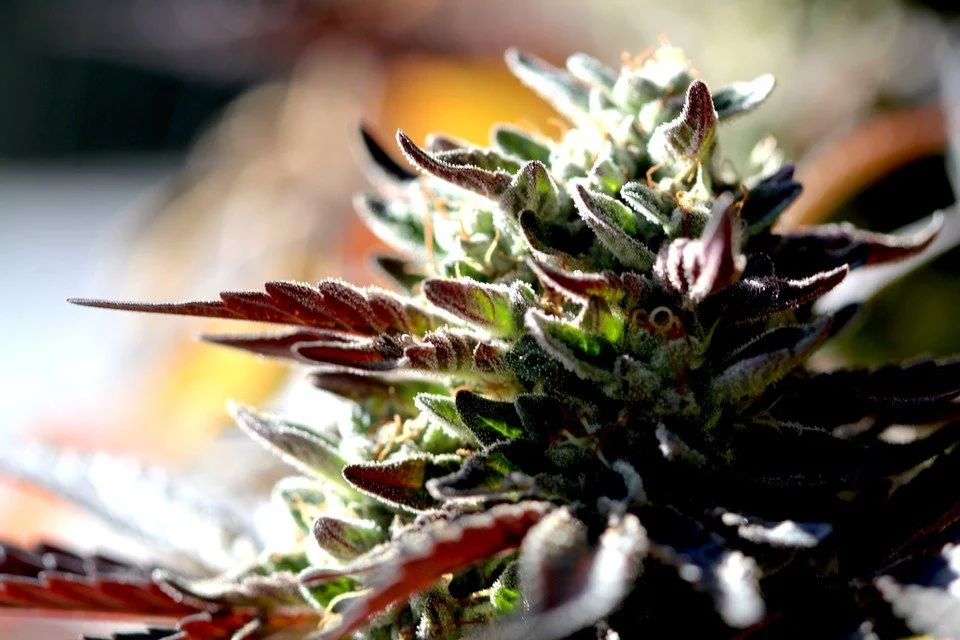Critics often highlight odor nuisances associated with cannabis cultivation, but it is important to acknowledge that vineyards, too, emit strong smells due to the use of agricultural inputs like sulfur. Addressing odor concerns without considering the broader context of other agricultural activities may lead to unfair treatment. Similarly, noise and lighting impacts are often cited as potential drawbacks of cannabis cultivation, but vineyard operations involving heavy equipment and non-downcast lighting practices can also disrupt neighboring communities.
Cannabis & Cover Crops
Monocropping, or planting only one type of crop on land, has become a common practice in modern agriculture, including the cannabis industry. Unfortunately, this practice can lead to soil depletion, pest outbreaks, and reduced biodiversity. However, by incorporating cover crops in the winter, growers can break the destructive cycle of monocropping and promote soil health and biodiversity.
While many cannabis growers may assume that cover cropping is only for outdoor farmers who grow in the ground, this practice can also apply to those who cultivate pots and raised beds. Growers can incorporate cover crops by planting them in the ground, pots, and raised beds during winter when cannabis plants are not growing as vigorously. Cover crops such as rye, clover, and legumes provide essential nutrients to the soil.
In addition to providing nutrients, cover crops can also help suppress weed growth, reduce soil erosion, and create a habitat for beneficial insects, making them a great addition to any cannabis cultivation practice. By using cover crops in pots, growers can promote soil health and biodiversity in a more controlled growing environment, ultimately leading to healthier and more abundant cannabis crops.
Another approach to breaking the destructive cycle of monocropping in cannabis cultivation is to embrace crop rotation. Crop rotation involves planting different crops in the same soil over time, allowing the soil to recover and replenish the nutrients that have been lost. This practice can be applied to both outdoor and indoor cannabis growers, making it a versatile and effective solution to promoting soil health and diversity. Strict regulations on where cannabis can be planted can make this challenging, so check your local ordinance and state regulations.
Incorporating cover crops in the winter and embracing crop rotation are two effective ways for cannabis growers to break the destructive cycle of monocropping. These practices can be applied to outdoor, greenhouse, and indoor growers, providing a simple and effective solution for promoting soil health and biodiversity. By taking steps to diversify the crops grown on the land, cannabis growers can contribute to a more sustainable and resilient cannabis industry.
Reducing Costs in a Volatile Cannabis Market
Market volatility heavily impacts agriculture, making it difficult for farmers to manage costs while generating a profit. The cannabis industry is not immune to fluctuating prices, with each state's high regulatory compliance costs and a competing illicit market increasing the stakes for cannabis farmers.
Cutting labor costs is one strategy that can help reduce agricultural costs in a volatile market. This can be achieved through various techniques, such as reducing the number of harvests, planting later, reusing soil, joining a cannabis cooperative, and adopting lean agricultural management practices.
Reducing the number of labor-intensive harvests per year is an effective way to reduce labor costs. For farmers cultivating in greenhouses or indoors, rotating the types of cannabis they plant can be achieved. For example, consider growing cannabis for fresh frozen during winter months, cutting labor costs in half. By doing so, producers can minimize the need for labor for extended periods while still maintaining a constant supply of crops.
Another strategy is planting later in the season, reducing the size of flower clusters, and avoiding the time-intensive task of trellis netting and staking plants. Smaller plants are easier to manage and less prone to mold and breakage. Planting later can also reduce the risk of crop damage due to weather conditions, pests, or disease outbreaks, which can further reduce costs associated with crop loss.
Amending soil through compost or manure instead of purchasing new soil yearly can reduce costs. Partnering with a company to create a soil management plan can improve soil quality and reduce the need for expensive fertilizers, reducing costs and higher crop yields.
Joining a cannabis cooperative can lower operating costs by sharing resources, splitting marketing fees, and growing networks to avoid costly cultivation mistakes. Lean agricultural management practices such as optimizing resource use, minimizing waste, and improving supply chain management can reduce overall costs, improve productivity, and increase profitability.
In conclusion, reducing labor costs through strategies such as reducing the number of harvests, planting later, reusing soil, and adopting lean agricultural management practices can help farmers cut costs and increase profitability in a volatile market. By adopting these strategies, farmers can operate more efficiently and remain competitive despite uncertain economic conditions.
Resources
Why Farmers Take a Fallow Year in Farming
Preparing Cannabis Farm for Winter
While winter brings some time for rest and recovery, for those involved in year-round cultivation, the new season brings added complexities for growing cannabis. The plant is thought to have evolved about 28 million years ago on the eastern Tibetan Plateau, which is home to extremely cold winters. While cannabis can grow in the winter, taking some extra steps to support your greenhouse cannabis cultivation can certainly help.
Harvesting Craft Cannabis
In a market that’s increasingly being taken over by large-scale production, lower quality, and cheaper prices, it’s important to look at the better alternative: craft cannabis. What makes Giving Tree Farms and other craft cannabis producers stand out? From seed-to-package, there’s a certain mindfulness involved. So, let’s take a look at what harvesting craft cannabis entails.
Considerations When Preparing for Fresh Frozen Cannabis
Fresh-frozen cannabis has taken the cannabis world by storm in recent years. As the name suggests, fresh-frozen cannabis entails freezing the harvest directly after it’s been picked. It’s been growing in popularity—especially as it’s one of the best methods we have to preserve terpenes and cannabinoids.
Join us for a behind-the-scenes look at how we go about producing fresh-frozen cannabis.
Staying Environmentally Conscious and Aware of Your Consumer’s Health
Working with our plants is meditative for most of us cannabis farmers. Our hands caked in dirt, lined along the underneath of our fingernails, our breath lengthened while we physically work in the fields, and our noses filled with the sweet aroma of live buds ripening with the sun. All are centering thoughts for us with a passion for cultivating cannabis, but it doesn't just stop there. While using organic nutrients and pest management techniques has been the standard for Giving Tree Farms since the beginning, our understanding of why this is important to our planet and consumer's health continues to grow each year.
Time is Money
As owners and operators, we know how valuable our time is. We wear a dozen different hats, take responsibility for the outcomes, and find ourselves fully immersed in all things business seven days out of the week. But what separates the overwhelmed from the productive is respecting the time we are given each day. Without planning and scheduling, we hurt our business's efficiency, costing ourselves money in the long run.
Lean Cultivation
Part of our passion at Giving Tree Farms lies with finding creative ways to boost our sustainability and efficiency. And much like Lean Manufacturing, we work to achieve “Lean Cultivation,” an application that reduces our waste through our cultivation procedures without sacrificing efficiency and productivity. Every area of our operation ties in methods that reduce, reuse, or recycle our waste, from the garden to the processing room and all the way into the administration office. Lean Cultivation is a fully immersive approach to operating our business, one that is great for the environment and our achievement of such high-quality cannabis.








